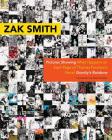The Book of Gin by Richard Barnett may be as dry as the London Dry Gin it tracks throughout history and ultimately celebrates as our most civilized spirit. That’s not to say the book is not enjoyable, because it is, but Barnett’s academic background is apparent throughout. That’s a plus in terms of the thorough treatment of the subject.
The story of gin starts with the alchemical discovery of distillation in the middle ages, combined with the use of botanically infused cordials for health purposes. These early proto-gins were largely monastic creations, but it was the early medical community that promoted the virtues of taking these cordials for a variety of health benefits. The mid sixteenth century saw the Dissolution of the Monasteries after Henry VIII’s break with the Roman church. Women now started distilling these cordials at home, but production soon grew to commercial proportions as tipplers discovered these proto-gins to be rather enjoyable to drink, not just as health tonics.
During this same period, the precursor to modern gin was developed by Dutch doctors and apothecaries. Wild juniper was ubiquitous and did a good job of hiding the rough edges of grain spirits. Soon the Dutch thirst for genever spread as sailors with the Dutch East India Company took their preferred spirit with them on their voyages. It was the English, though, who really developed a taste for gin and London became the epicenter of “the gin craze.” Here all the factors were in place for gin to become cheap escape from the brutal lives of the urban poor. And so almost as soon as gin became common (in every sense of the word), the rumblings of the moralists began. At this point the story of gin becomes sad. Barnett is most thorough here, though I was ready to move on to bright young things quaffing cocktails and whiskered and monocled colonials swilling G&Ts in the subcontinental heat. But before gin rises again, it must fall to its low point, so we have lots of quotes condemning gin and its disastrous societal effects, the Gin Acts meant to curb production and consumption, and William Hogarth’s iconic engraving “Gin Lane,” which shows a London firmly in the grips of the filthy claws of demon Gin.
At this very point, some of England’s oldest distilleries were established and a new technique of continuous distillation and rectification vastly increased the capacity to produce London dry gin. Medical thinking had shifted against gin, fire in the bosom now, rather than an enlivening tonic. But the moral opprobrium cast upon spirits crossed the ocean to the new world, where Americans in the latter part of the nineteenth century had already begun their foolish march toward prohibition.
Before we come to the immense growth of cocktail consumption ironically brought about in the U.S. by prohibition, we return to the British Empire and a series of discoveries that have enriched our lives immeasurably. First cinchona or quinine was introduced from South America to Europe by the Spaniards. A little more than a century later, Joseph Priestly created the first carbonated water. The stage was set for the gin and tonic. Without this drink, life would be so much meaningless rubbish to be stoically endured. But gin is also the base for countless other outstanding cocktails and two more discoveries went on to enrich our drinking lives in ways we often fail to adequately appreciate. The early nineteenth century saw the development of both Peychaud’s bitters (more frequently paired with rye whisky in the Sazerac) and Angostura bitters (a German product, but immensely popular with the Brits). Any reader of Evelyn Waugh knows the ubiquitous pink gin that pairs our favorite spirit with Angostura bitters. By the late nineteenth century, the British finally had a method of preserving limes during long sea voyages so the sailors might avoid scurvy. A Scotsman named Lauchlin Rose preserved lime juice by adding a little sulphur dioxide. Everything was now in place for the growth of a serious cocktail culture.
Many pre-prohibition drink mixing guides make it clear that the late nineteenth century already knew some outstanding cocktails, but it must have been the poor quality of illegal spirits during prohibition that necessitated adding a variety of mixers to render them palatable. Prohibition also made cocktails and speakeasies icons of stylish defiance, as well-dressed funseekers quaffed gin late into the night, blithely ignoring the law of the land that would keep good Americans sober. Many Americans simply left America. The lost generation spent much of the period between the wars in Europe. Hemingway and Fitzgerald surely came to epitomize the hard-drinking American author.
We now reach what is perhaps the highpoint of the story of gin. The martini, whose origins are somewhat mysterious, already existed. But it took quality gin to make it well. After the end of prohibition, access to fine spirits returned. The martini must be regarded as the quintessence of gin cocktails. Barnett is good on the fetish for extremely dry martinis, where the vermouth is often omitted altogether. This became the drink embodying the aspirations of a generation during America’s most prosperous decades just after WWII. The semiotic density of that conical glass filled with iced gin could surely be unpacked to reveal the portrait of a nation at one point in time. But that time passed, and that generation came to be regarded as hopelessly square. The cocktail was just one of the symbols of that square life. And so the cocktail (and beautiful gin) went into decline.
Barnett ends on a positive note as the new generation has embraced spirits and the cocktail culture. A new generation of mixologists is resurrecting classic cocktails and creating its own. Small-batch distillers are thriving, in the U.S. as well as England.
It’s a good time to be a drunkard.

























